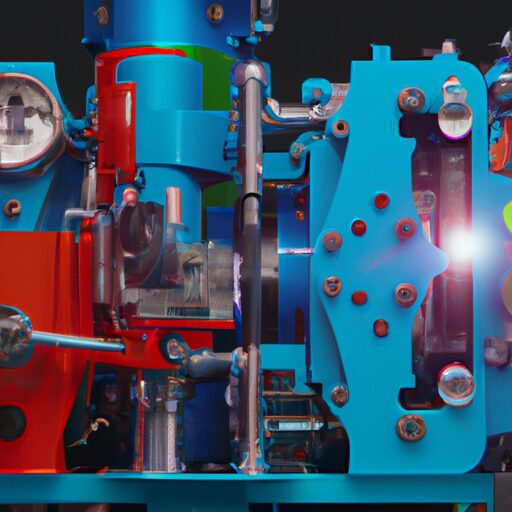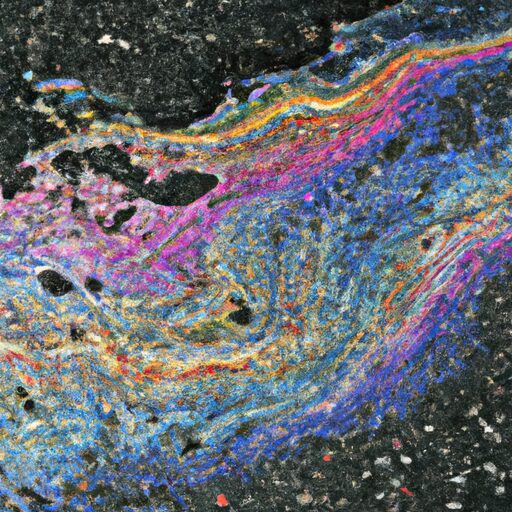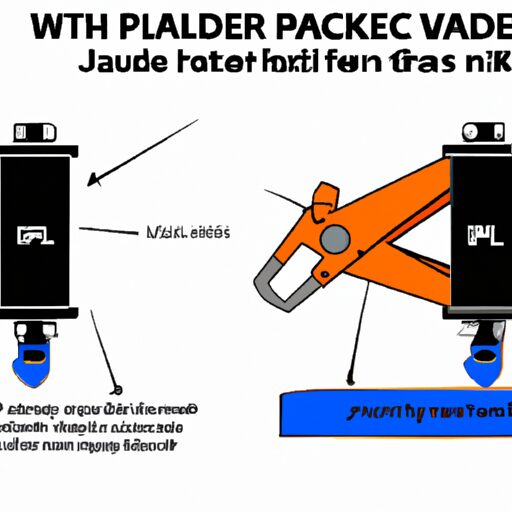Difference Between Hydraulics And Fluid Mechanics
In the realm of fluid dynamics, two distinct branches emerge: hydraulics and fluid mechanics. While both fields deal with the behavior of fluids, they exhibit nuanced differences in their approaches and applications. Understanding these disparities is crucial for professionals seeking to navigate the intricacies of fluid dynamics and choose appropriate career paths.
Hydraulics, often likened to a drop in the bucket, focuses on the study of fluid behavior specifically within confined spaces or systems. This branch primarily concerns itself with engineering applications such as hydraulic machinery, pipelines, and control systems. On the other hand, fluid mechanics takes a broader perspective akin to casting a wide net into an ocean. It encompasses the study of fluid behavior in both confined and unconfined settings, encompassing phenomena like turbulence, flow patterns, and aerodynamics.
This article aims to unravel the dissimilarities between hydraulics and fluid mechanics by delving into their respective definitions, applications, and key differentiating factors. By providing this comprehensive overview, readers will gain clarity on these disciplines’ distinctions while gaining insight into potential career opportunities within each field.
Definition of Hydraulics and Fluid Mechanics
Hydraulics and fluid mechanics are distinct branches of study that pertain to the analysis and understanding of the behavior and properties of fluids, with hydraulics specifically focusing on the practical application of fluid mechanics in engineering systems. Fluid mechanics is a broader field that deals with the fundamental principles governing fluid flow, while hydraulics focuses on applying those principles to engineering applications.
One key difference between hydraulics and fluid mechanics lies in their scope. Fluid mechanics encompasses both liquids and gases, studying their behavior under various conditions such as flow rates, pressure differentials, and viscosity. On the other hand, hydraulics primarily deals with liquid fluids such as water or oil in closed or open systems.
Another distinction between these two branches is their respective applications. Hydraulics finds its practical use in various industries like automotive technology, construction machinery, aerospace engineering, and even water management systems. It plays a crucial role in enabling efficient power transmission through hydraulic pumps and motors. In contrast, fluid mechanics has broader applications beyond engineering systems including atmospheric science, biomechanics, chemical processing equipment design, and even blood circulation analysis.
Understanding the differences between hydraulics and fluid mechanics provides a foundation for exploring their wide-ranging practical applications across multiple fields.
Applications of Hydraulics and Fluid Mechanics
The applications of hydraulics and fluid mechanics can be seen in various fields of engineering and physics. In engineering, hydraulics play a crucial role in the operation of machinery and equipment, allowing for precise control and power transmission through the use of fluids. On the other hand, fluid mechanics is essential in understanding the behavior and properties of fluids, which is crucial for designing efficient systems and structures in both physics and engineering disciplines. These applications require a technical understanding of the principles behind hydraulics and fluid mechanics to ensure optimal performance and safety.
Hydraulics in Engineering and Machinery
Engineering and machinery applications involve the use of pressurized fluids to generate power and control mechanical systems. Hydraulic systems, a major part of hydraulic engineering, play a crucial role in various industries. Here are three key applications:
-
Heavy machinery: Hydraulic systems are widely used in heavy equipment such as cranes, excavators, and bulldozers. The pressurized fluid enables these machines to lift heavy loads with precision and ease.
-
Aircraft control: Hydraulics are vital for controlling the flight surfaces of aircraft, including rudders, elevators, and ailerons. By providing reliable power transmission and precise control, hydraulic systems ensure safe and efficient maneuverability.
-
Manufacturing processes: Many production lines rely on hydraulics to operate machinery like presses or robots that require high force or repetitive motion.
Fluid mechanics in physics and engineering further explores the behavior of liquids and gases in motion beyond the scope of hydraulic applications.
Fluid Mechanics in Physics and Engineering
Fluid mechanics, like a captivating dance between molecules, delves into the intricate movements and interactions of liquids and gases within the realms of physics and engineering. It studies how fluids behave under various conditions, using mathematical equations to describe their flow and properties. These equations help us understand phenomena such as fluid dynamics, viscosity, buoyancy, and turbulence. Fluid mechanics finds applications in numerous fields, from designing efficient aircraft wings to optimizing oil pipelines.
Real-life examples of fluid mechanics can be seen in everyday activities. When pouring coffee from a pot into a cup, the liquid follows a specific path due to gravity and surface tension. The flow of blood through arteries and veins also adheres to fluid mechanics principles. Understanding these phenomena allows engineers to design more efficient systems that maximize performance while minimizing energy loss.
Transitioning into the subsequent section about ‘key differences between hydraulics and fluid mechanics’, it is important to explore how these two interconnected disciplines diverge in their focus and applications.
Key Differences between Hydraulics and Fluid Mechanics
One significant distinction between hydraulics and fluid mechanics lies in their respective focuses on the practical application of fluid dynamics and the study of the fundamental principles governing fluid behavior. Hydraulics primarily deals with the engineering aspects of using fluids to generate, control, and transmit power. It involves key concepts such as fluid flow, pressure, and force, which are applied in various practical applications like hydraulic systems used in heavy machinery, aircraft landing gear, and car braking systems.
On the other hand, fluid mechanics is a branch of physics that focuses on understanding the fundamental principles that govern fluid behavior. It delves into topics such as viscosity, turbulence, and boundary layers to analyze how fluids behave under different conditions. Fluid mechanics has broader applications beyond engineering and can be used to study natural phenomena like ocean currents or atmospheric flows.
To further illustrate the differences between hydraulics and fluid mechanics, consider the following table:
| Aspect | Hydraulics | Fluid Mechanics |
|---|---|---|
| Focus | Practical application of fluid dynamics | Fundamental principles governing behavior |
| Key Concepts | Fluid flow, pressure, force | Viscosity, turbulence |
| Applications | Hydraulic systems in machinery | Natural phenomena |
These differences highlight how hydraulics emphasizes practicality while fluid mechanics seeks a deeper understanding of fluids. Moving forward into discussing similarities between hydraulics and fluid mechanics…
Similarities between Hydraulics and Fluid Mechanics
Both hydraulics and fluid mechanics share a common foundation in the study of how fluids behave under various conditions, providing valuable insights into the intricate workings of the natural world. While there are significant differences between these two disciplines, they also exhibit several similarities.
One similarity between hydraulics and fluid mechanics lies in their mathematical modeling approaches. Both fields rely on principles from calculus, differential equations, and numerical methods to describe fluid flow phenomena accurately. Mathematical models help engineers and researchers analyze and predict fluid behavior in different scenarios, enabling them to design efficient systems or solve complex problems.
Additionally, both hydraulics and fluid mechanics find practical applications in various industries. Hydraulics is commonly used in engineering systems that involve the transmission of power through pressurized liquids, such as hydraulic cranes or lifts. Fluid mechanics, on the other hand, has broader applications ranging from designing efficient aircraft wings to understanding blood flow patterns in medical research.
Understanding the similarities between hydraulics and fluid mechanics lays a solid foundation for appreciating their differences. By recognizing shared mathematical modeling techniques and practical applications across these disciplines, one can gain a deeper insight into why distinguishing between them is crucial for further advancements in both fields.
Importance of Understanding the Differences
Understanding the distinctions between hydraulics and fluid mechanics is akin to deciphering the intricate patterns of a complex tapestry, revealing a deeper understanding of how fluids behave and enabling advancements in diverse industries. It is of paramount importance to have a conceptual understanding of these differences as it lays the foundation for practical applications in various fields.
The importance of grasping the disparities between hydraulics and fluid mechanics lies in their respective focuses. Fluid mechanics deals with the study of fluid behavior in general, encompassing both gases and liquids. On the other hand, hydraulics specifically concentrates on studying how liquids behave under pressure within confined spaces. By comprehending this distinction, engineers and scientists can accurately assess and predict fluid flow characteristics, allowing for efficient design and optimization of hydraulic systems such as pumps, valves, and pipelines.
Moreover, recognizing the dissimilarities between hydraulics and fluid mechanics facilitates specialization within certain industries. For instance, knowledge in fluid mechanics may be crucial for aerospace engineers working on aircraft design or chemical engineers designing mixing systems. Conversely, expertise in hydraulics may be essential for civil engineers constructing water distribution networks or marine engineers designing ship propulsion systems.
In conclusion, developing an understanding of the differences between hydraulics and fluid mechanics holds immense value for professionals in various disciplines. This conceptual grasp enables accurate analysis and prediction of fluid behavior, leading to optimized designs within specific industries. Transitioning into a discussion about career opportunities in hydraulics and fluid mechanics reveals numerous pathways where this knowledge can be applied effectively without compromising efficiency or safety.
Career Opportunities in Hydraulics and Fluid Mechanics
Career opportunities in the field of hydraulics and fluid mechanics encompass a vast array of industries and sectors, offering professionals the chance to apply their expertise in areas such as aerospace engineering, chemical engineering, civil engineering, and marine engineering. The job prospects in this field are promising due to the high industry demand for individuals with specialized knowledge in hydraulics and fluid mechanics.
-
Aerospace Engineering: Professionals skilled in hydraulics and fluid mechanics play a crucial role in designing aircraft systems that involve hydraulic control mechanisms for landing gears, flight controls, and braking systems.
-
Chemical Engineering: In the chemical industry, experts in hydraulics and fluid mechanics are needed to optimize processes involving fluid flow, heat transfer, mixing, and separation operations.
-
Civil Engineering: Hydraulics is essential for designing water supply systems, sewage treatment plants, irrigation networks, and flood control measures. Fluid mechanics also plays a significant role in analyzing flow behavior around structures like bridges or dams.
These career opportunities emphasize the importance of understanding hydraulics and fluid mechanics principles across various industries. For those interested in pursuing a career in this field or exploring further learning options beyond traditional academic routes, there are abundant resources available for further learning and exploration into these subjects.
Resources for Further Learning and Exploration
Numerous educational resources are available to individuals seeking to expand their knowledge and explore new avenues within the field of hydraulics and fluid mechanics. Whether you are a student, researcher, or industry professional, there are various options for further reading and online courses that can deepen your understanding of these subjects.
For those looking for more in-depth theoretical knowledge, textbooks such as "Fluid Mechanics" by Frank M. White or "Hydraulics in Civil and Environmental Engineering" by Andrew Chadwick and John Morfett provide comprehensive coverage of the principles and applications in these fields. These resources offer a solid foundation for anyone interested in pursuing a career or conducting research in hydraulics and fluid mechanics.
In addition to traditional books, online platforms like Coursera, Udemy, and edX offer a wide range of courses on hydraulics and fluid mechanics. These courses cover topics such as fluid dynamics, hydraulic systems design, computational fluid dynamics (CFD), and more. They often include interactive lectures, practical exercises, quizzes, and assignments to enhance learning outcomes.
By taking advantage of these resources for further reading and online courses, individuals can gain valuable insights into the complexities of hydraulics and fluid mechanics. Whether you are an aspiring engineer looking to build a solid foundation or an experienced professional seeking to broaden your expertise in specialized areas like CFD simulation or hydraulic system optimization, these educational materials can greatly contribute to your growth within the field.
Frequently Asked Questions
How do hydraulics and fluid mechanics relate to the field of aerospace engineering?
Hydraulics and fluid mechanics play crucial roles in aerospace engineering. Fluid mechanics, applied in the automotive industry, enables understanding of airflows around aircrafts. Hydraulics, used extensively in the construction industry, allows for control of aircraft systems like landing gear and flight controls.
What are some examples of everyday applications of hydraulics and fluid mechanics?
Everyday applications of hydraulics and fluid mechanics include the operation of car brakes, airplane landing gear, and hydraulic lifts. These real-life examples demonstrate how these principles are used in various industries to transmit power and control motion.
Can you explain the concept of fluid dynamics and its relevance to hydraulics and fluid mechanics?
Fluid dynamics is the study of fluid motion and its behavior under different conditions. It is highly relevant to hydraulics and fluid mechanics as it provides a conceptual framework for understanding the flow characteristics and forces acting on fluids in various applications.
Are there any specific challenges or limitations associated with implementing hydraulics or fluid mechanics in various industries?
Implementing hydraulics and fluid mechanics in various industries can present specific challenges and limitations. These may include the need for specialized equipment, potential safety risks, high maintenance requirements, and limited applications in certain industries.
What are some emerging trends or advancements in the field of hydraulics and fluid mechanics?
Emerging technologies in hydraulics and fluid mechanics are having a significant impact on transportation. Advancements such as electrohydraulic systems, digital controls, and intelligent sensors improve efficiency, safety, and performance in various industries.
Conclusion
In conclusion, understanding the differences between hydraulics and fluid mechanics is crucial in the field of engineering. By grasping the distinctions between these two disciplines, professionals can effectively apply their knowledge to various applications and industries. Moreover, recognizing the similarities between hydraulics and fluid mechanics allows for a comprehensive understanding of how fluids behave and interact with different systems. Aspiring engineers should explore further resources to enhance their knowledge in these areas, as career opportunities in hydraulics and fluid mechanics are abundant. Exciting advancements await those who delve deeper into this complex world of fluid dynamics.







